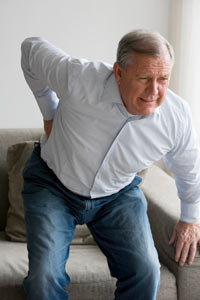 By the year 2050, the proportion of older people in America will have tripled, accounting for 20% of the total population. In order to prepare for future healthcare demands, it is necessary to understand the impact of certain conditions that are more common among elderly people. This includes chronic musculoskeletal (MSK) diseases, which are considered to be one of the major disabling conditions among the elderly population.
By the year 2050, the proportion of older people in America will have tripled, accounting for 20% of the total population. In order to prepare for future healthcare demands, it is necessary to understand the impact of certain conditions that are more common among elderly people. This includes chronic musculoskeletal (MSK) diseases, which are considered to be one of the major disabling conditions among the elderly population.
In 2003, the WHO's Global Burden of Disease study and the Bone and Joint Monitoring Project concluded that the prevalence of these major MSK conditions increases with age. However, more research is needed to determine the current prevalence of MSK diseases among elderly people.
A recent systematic literature review sought to determine this prevalence by examining the results of studies published between January 2000 and July 2011 about the prevalence of MSK conditions including osteoarthritis, osteoporosis, rheumatoid arthritis, back pain, and non-specific extremity pain among people aged 60 or older.
A total of 173 different prevalence estimates were included in the literature review. The studies found agreed that musculoskeletal disorders are common in the elderly population. However, due to differing methodologies between the studies, a great variation in prevalence estimate was found, making it impossible to determine any overall estimates on the prevalence of MSK problems.
Through a review of the estimates included in the report, the researchers were able to conclude that prevalence estimates appear to remain fairly constant or decrease slightly among the most elderly people (80+). Women tend to report more MSK pain than men.
Widespread musculoskeletal pain appears to affect up to half of elderly people. Previous studies have shown chiropractic adjustments to be both safe and effective treatments for older adults with back pain, a common form of MSK pain. In addition, it is generally believed that pain at younger ages continues in the older ages, suggesting that chiropractic treatments for pain experienced in midlife may lead to lower pain in elderly people.
Reference
Fejar R, Ruhe A. What is the prevalence of musculoskeletal problems in the elderly population in developed countries?A systematic critical literature review. Chiropractic and Manual Therapies 2012: 20 (31): doi:10.1186/2045-709X-20-31.



